Duxford Flying Legends Airshow 2002 Spitfires
|
The Supermarine Spitfire first entered service in 1938 and remained in service throughout the war and beyond. Unlike America's premier fighter, the P-51 Mustang, the Spitfire was continuously updated throughout its lifetime, producing a large number of different varieties, or "marks". One of the least common types is the Mk VIII, in fact this is the only one in Europe which is still flying. |
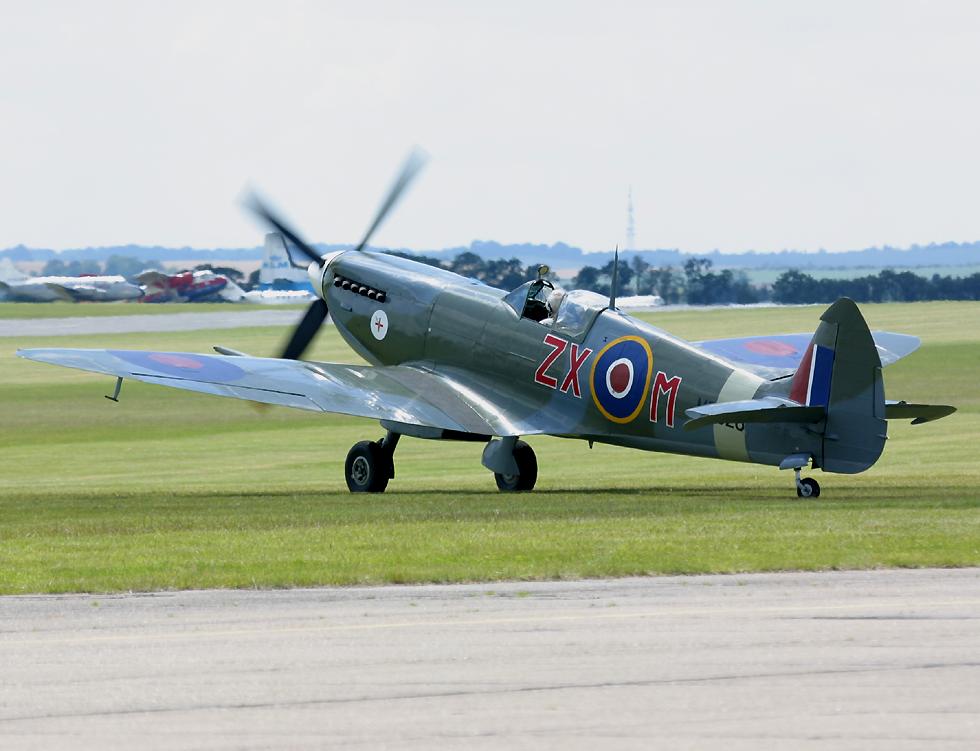 |
|
This is a Mk IX. This particular aircraft was built in 1944, and is said to be the first allied aircraft to land in France after D-Day. It was later sold to the Dutch air force, and then to the Belgian air force. |
 |
|
This Mk XIV is the only Spitfire flying in France. You can see that it has a five-bladed propeller instead of the four-bladed propellers of the previous two aircraft. It was previously operated by the Indian air force. Above the cockpit you can clearly see the rear-view mirror which allowed pilots to see enemies sneaking up from behind. |
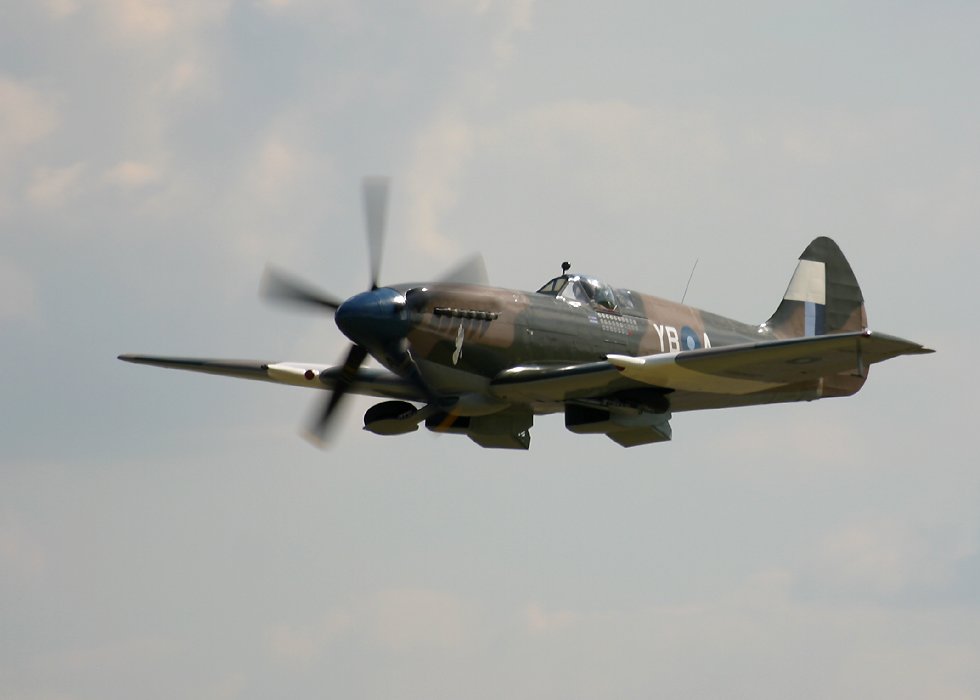 |
|
And here's a Spitfire with only 3 blades on its propeller, indicating that it's an early mark. In this case it's one of only four Mk V Spitfires in the world which are still flying. Further evidence of its early lineage is its tailwheel, which doesn't retract. The classic Spitfire wing is elliptical, but here you have the "clipped wing" version of the plane, a configuration which provided a faster roll rate, and therefore more maneuverability, at low altitudes. This Spitfire is painted in Royal Canadian Air Force colours as "The City of Winnipeg". Not quite the same ring as "Memphis Belle" or some of the other more risque American aircraft! |
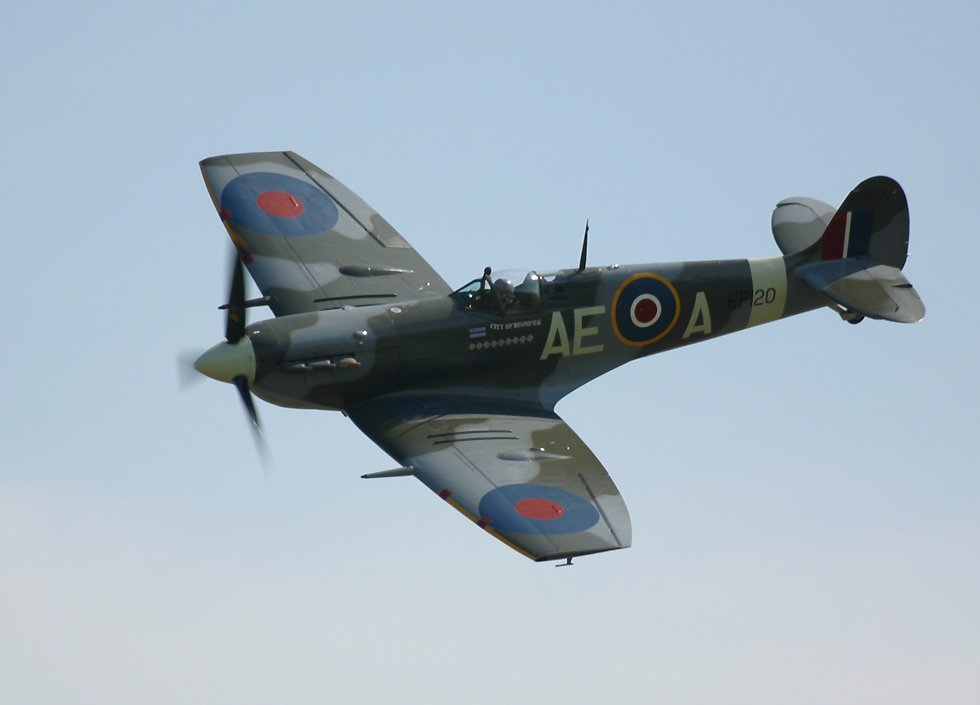 |
|
Here's that same Mk IX that you saw taking off a few photos ago, like the Mk V also with a non-retracting tailwheel, but with a four-bladed propeller. |
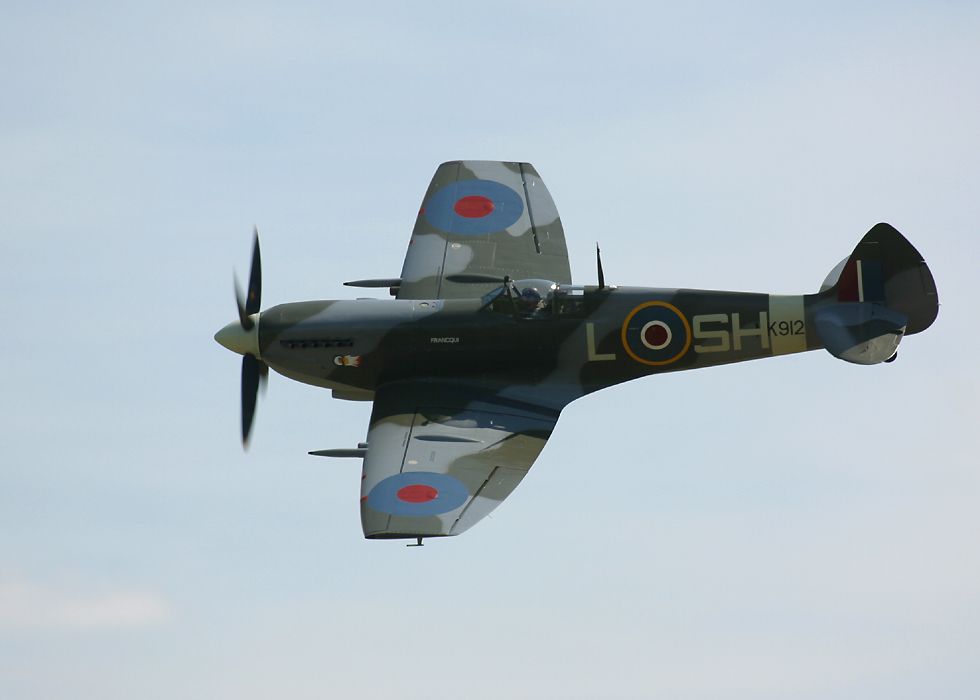 |
|
This Mk XVI has a low back in conjunction with the British developed "teardrop" canopy which also found its way into the P-51D Mustang. The new canopy improved all-around visibility, eliminating the need for a mirror. This particular Mk XVI was built in 1944 and it's now painted in the colours of a 41 Squadron Spitfire flying in the 1948/49 Blackpool Air Races. Surprisingly for such a late high-performance model, it has a non-retractable tailwheel. |
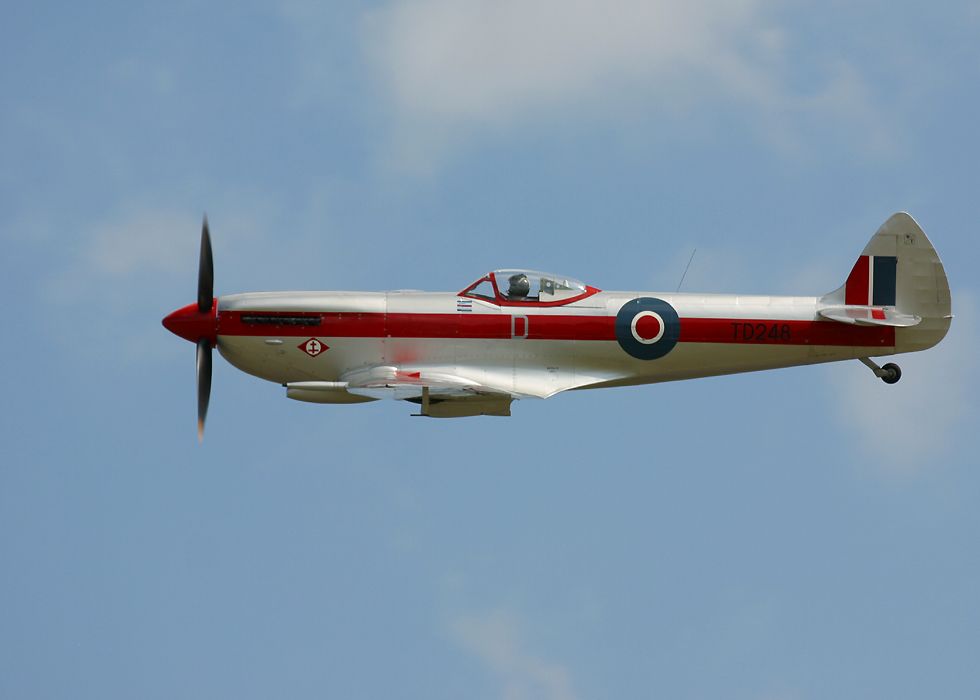 |
|
It's a beautiful machine! Most early Spitfires used the famous Rolls-Royce Merlin engine; it was the Merlin which turned the P-51 Mustang from a dud to a winner, and it was used in many aircraft, including the Mosquito and the Lancaster bomber. However, some later models used the even more powerful Rolls-Royce Griffon engine, which kept the Spitfire competitive against newer German fighters like the FW190. |
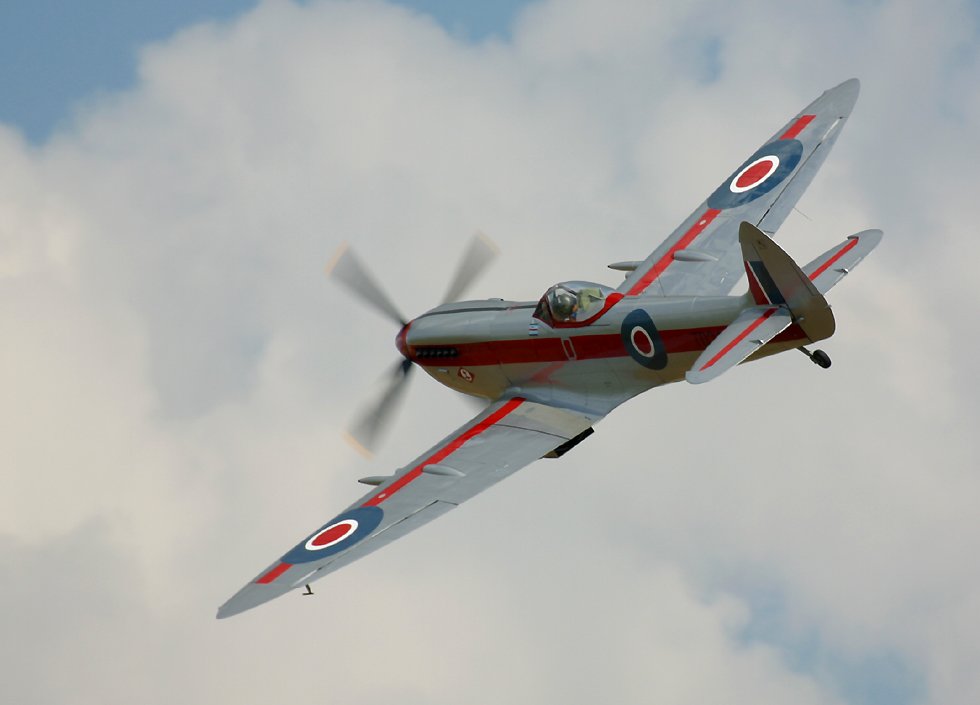 |
|
These guys aren't afraid of flinging these aircraft around the sky! Regardless of the model, Spitfires were always formidable hunters - even the Mk I had eight machine guns, and starting from the Mk II they started carrying cannons, which you can clearly see in this photo of the Mk VIII. This photo also very nicely shows the elliptical wing, a feature shared with the American P-47 Thunderbolt. |
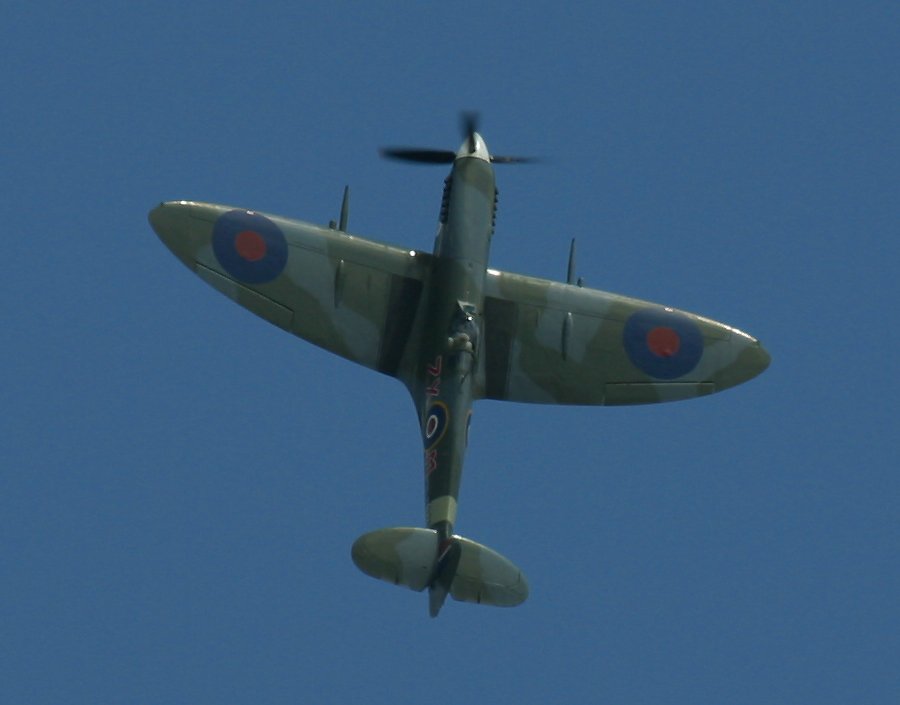 |
|
Another Mk V, this one's operating in the colors of a Polish squadron operating with the RAF. |
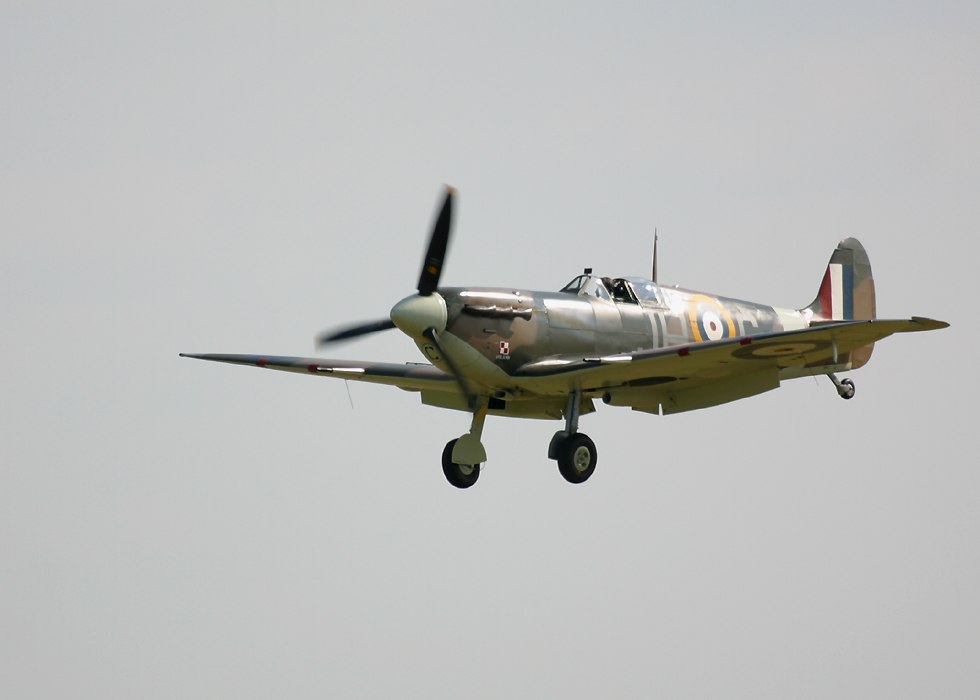 |
|
This is a Mk IX which entered combat in August of 1943. It survived the war, but crashed landed in Java where it was being flown by the Dutch air force. |
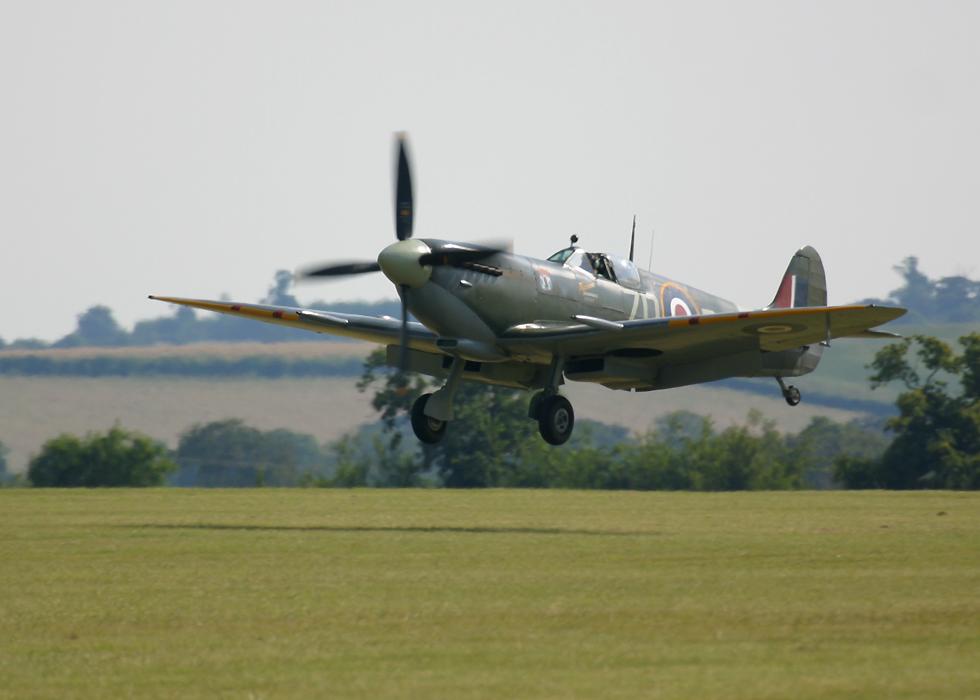 |
|
The Mk VIII again. You can see the little door that closes over the tailwheel when it's retracted. |
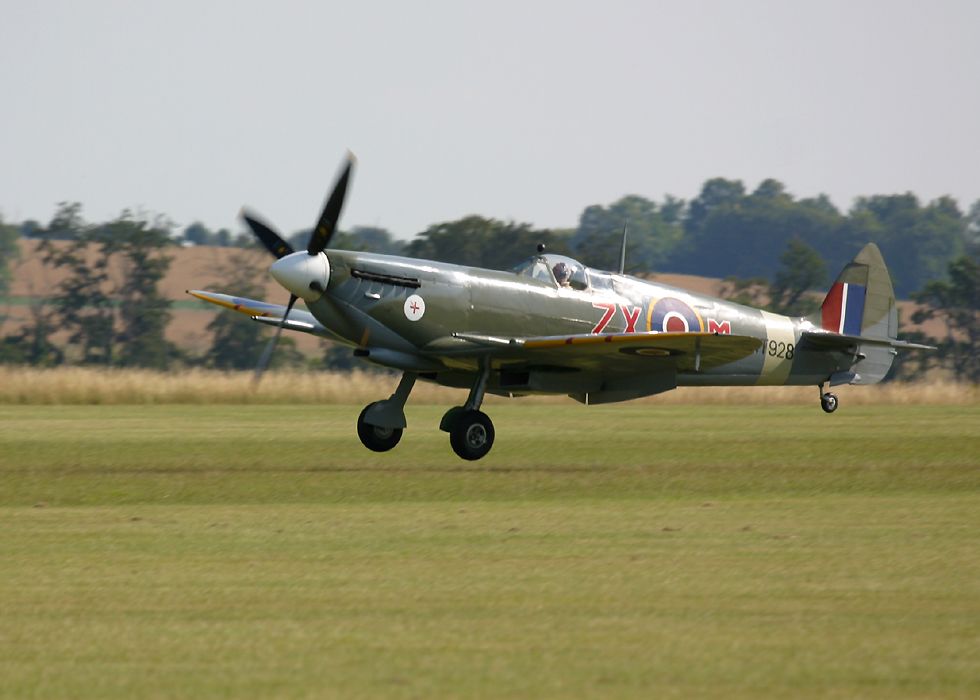 |
|
A Mk XIV with the same five-bladed propeller as the French example above, but with the low back and tear drop canopy of the Mk XVI. |
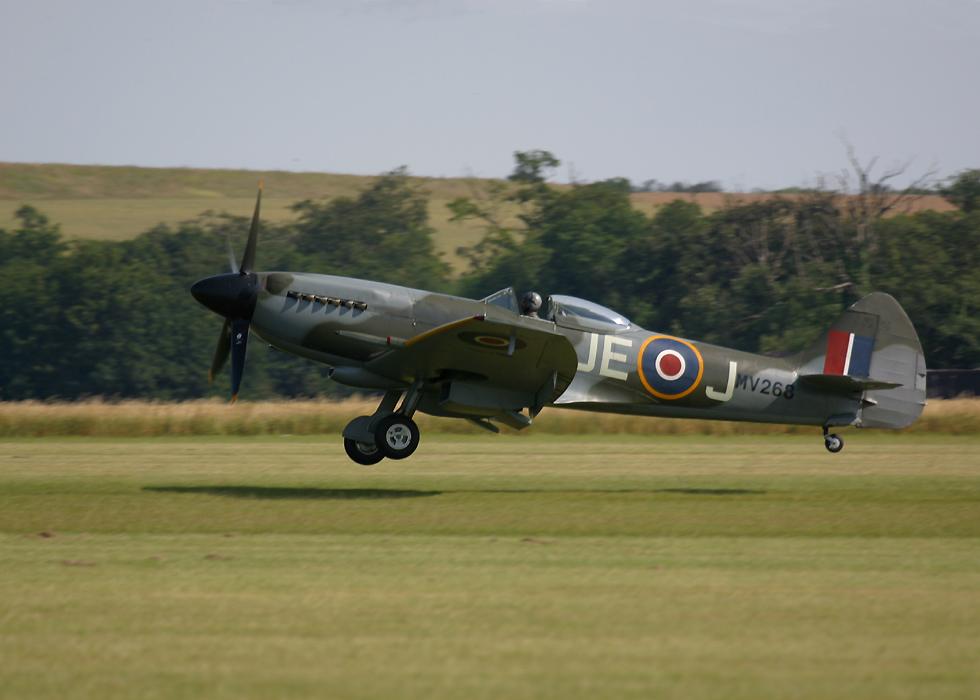 |
|
And to top it all off, the Mk XVI again! |
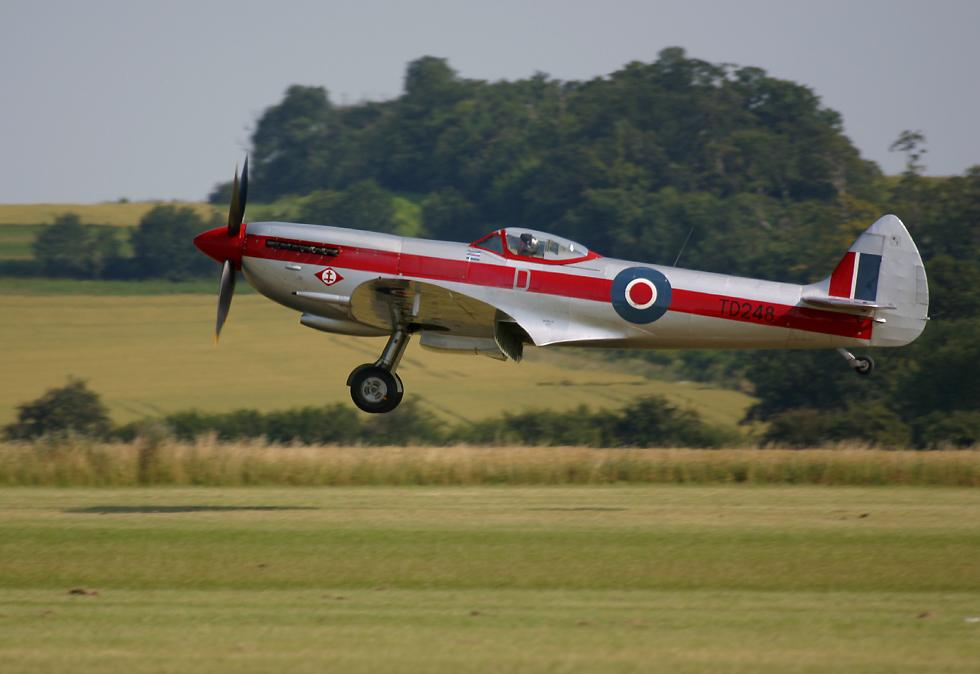 |